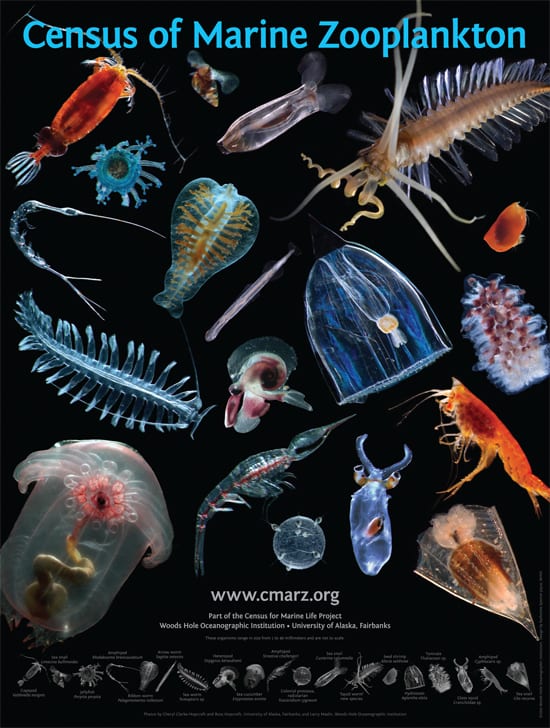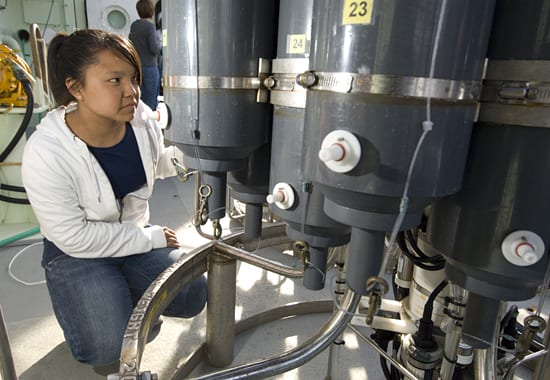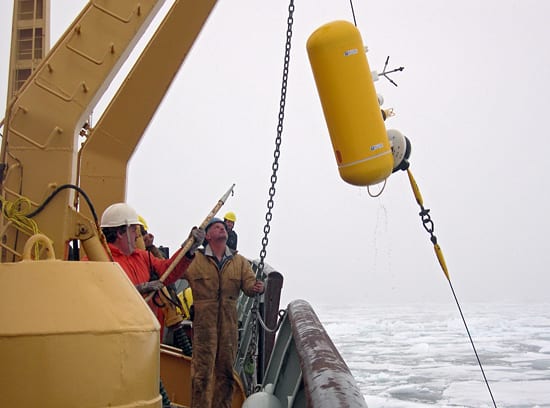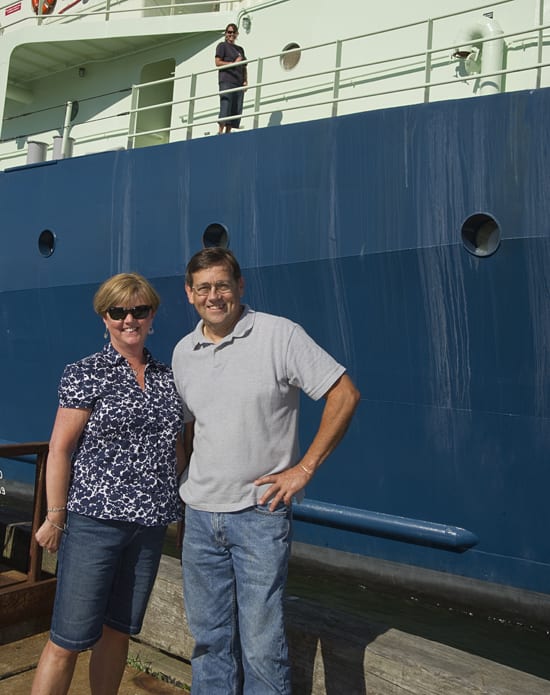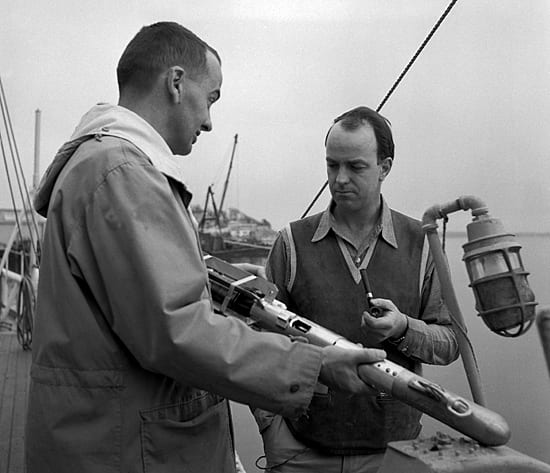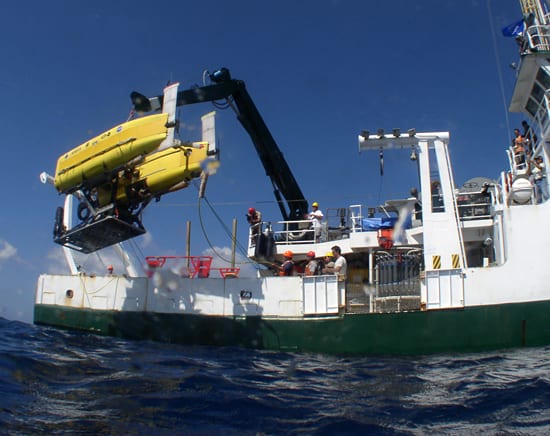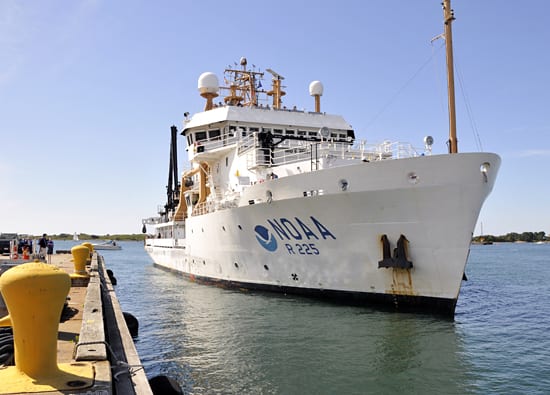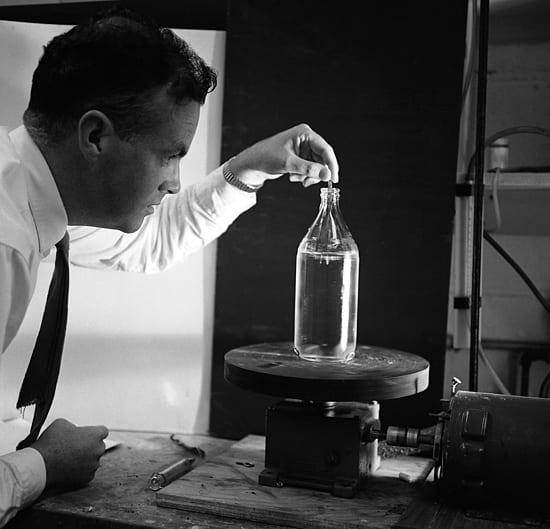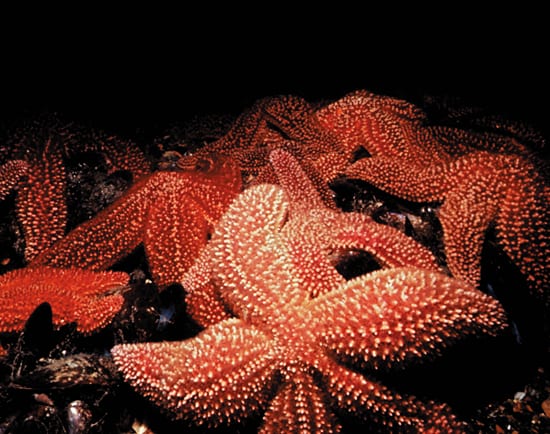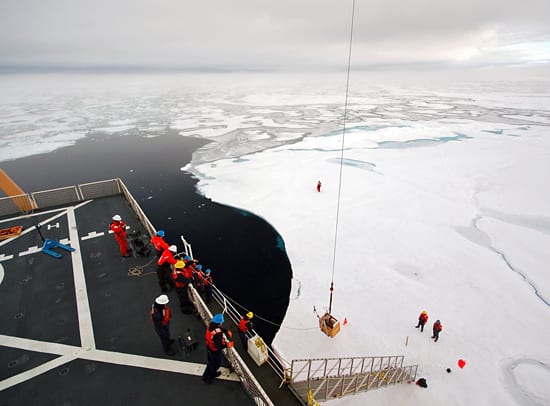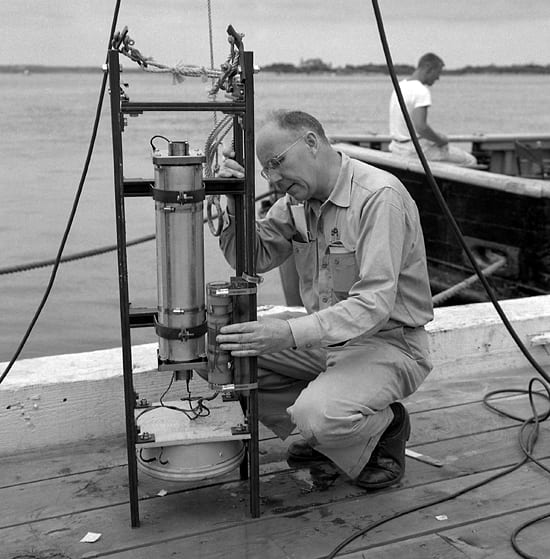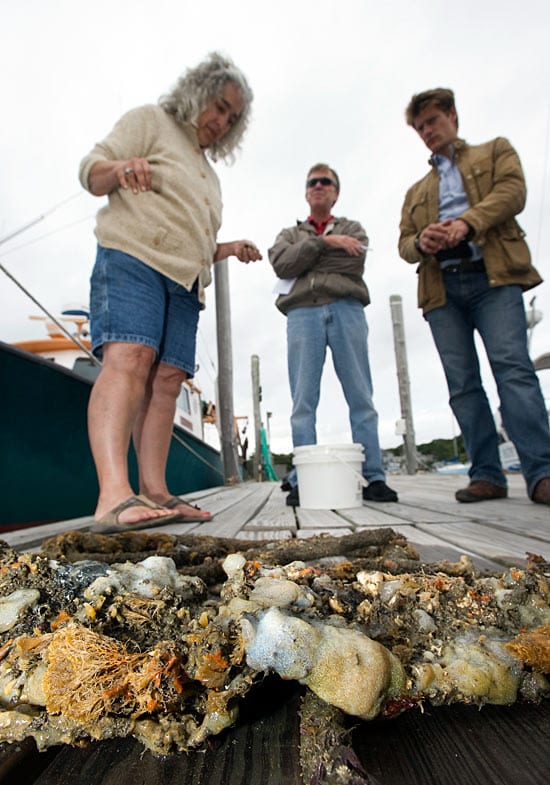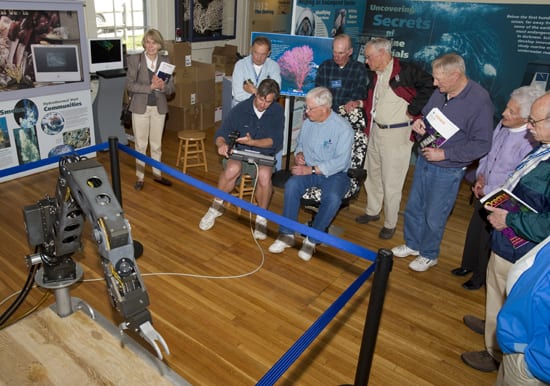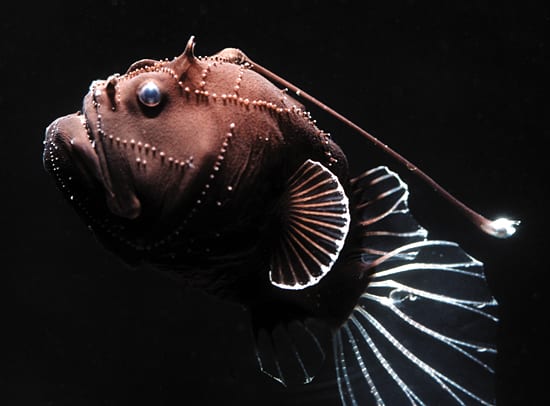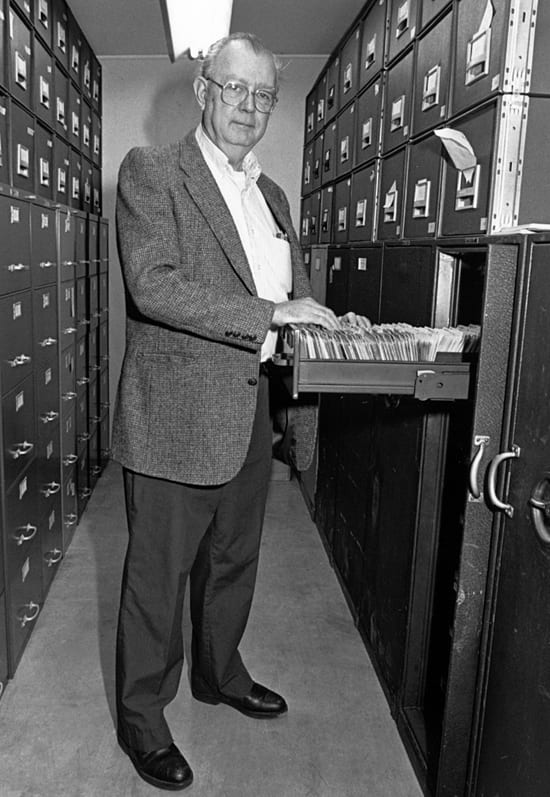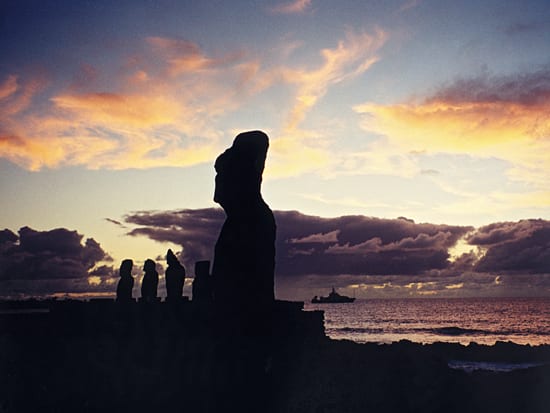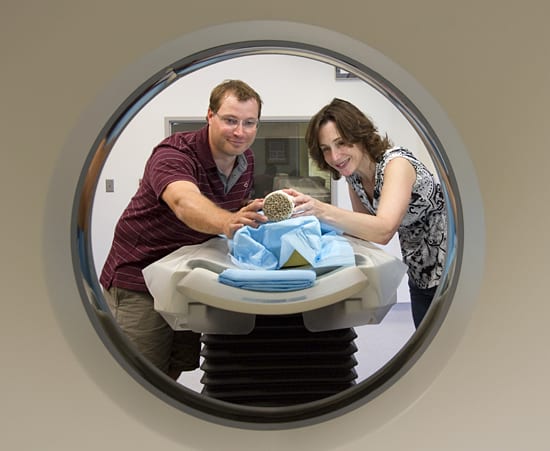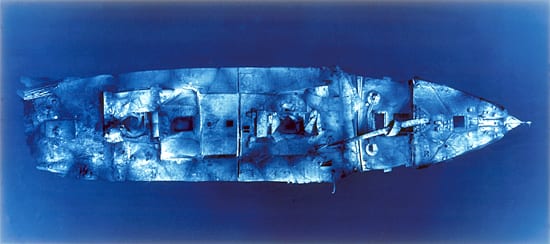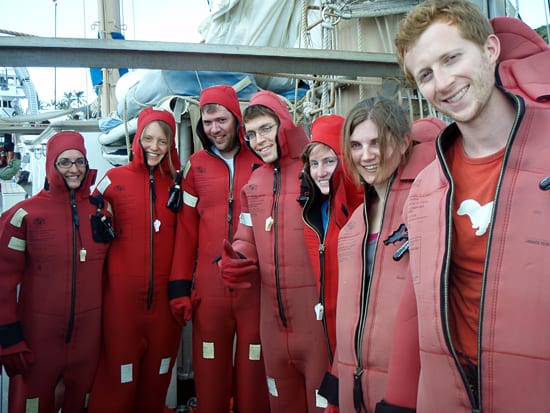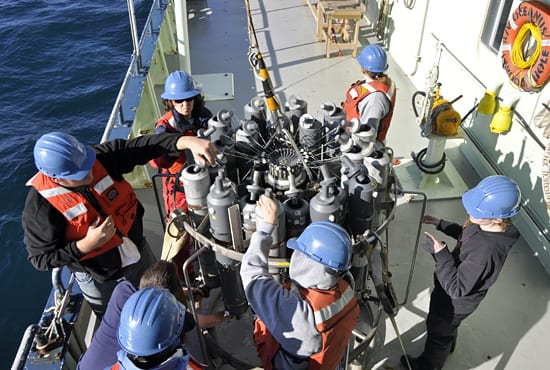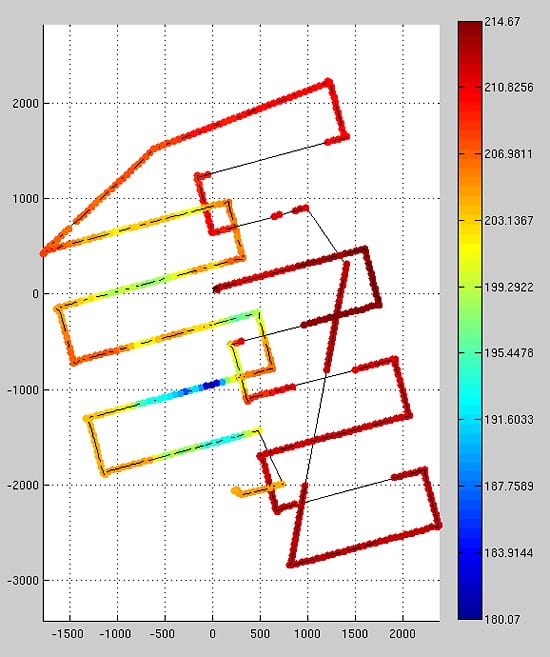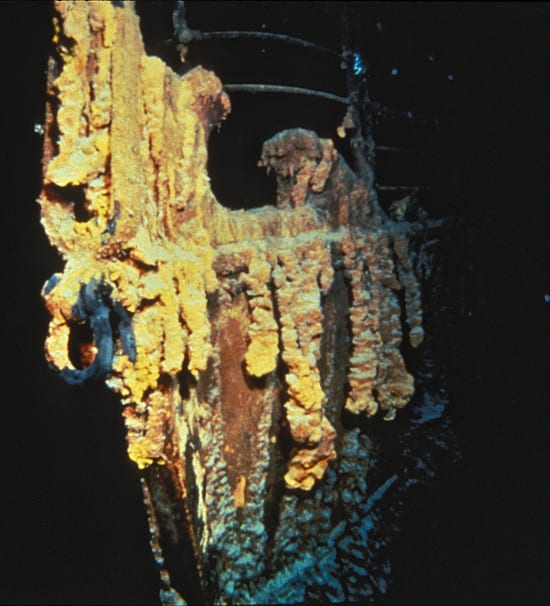Multimedia Items
Celebrating Planktonic Biodiversity
Planktonic animals from the world’s oceans drift across a poster celebrating the accomplishments of a long-term international research project, the Census of Marine Zooplankton (CMarZ). WHOI researchers Peter Wiebe, Nancy…
Read MoreReading the Depths
Working on the deck of the R/V Atlantis, William Shultz disassembles a bathythermograph, or BT—a torpedo-shaped device containing sensors that detect changes in water temperature and pressure. Developed in the…
Read MoreDetecting a Harmful Algal Bloom
Guest student Stacey Lee recovers water samples from a CTD rosette on the deck of the R/V Oceanus during a May 2008 cruise. Lee and others on board were studying…
Read MoreComing Aboard for Its Annual Check-Up
WHOI engineer John Kemp (in coveralls) and bosun Blaine Blinkhorn (in red) recover a McLane Moored Profiler (MMP) from the Beaufort Sea during a research cruise on the Canadian Coast…
Read MoreAll in the Family
Katie Eident (background) returned to Woods Hole recently on the R/V Atlantis after eight months aboard the ship. Her parents, Donna and William, were at the WHOI dock to greet…
Read MoreTwo Men and a BT
WHOI researchers Fritz Fuglister, left, and Dana Densmore inspect a bathythermograph, or BT, prior to a research cruise in 1957. BTs measure temperature and depth while being dropped from or…
Read MoreGoing Overboard
The hybrid remotely operated vehicle (HROV) Nereus is launched from the research vessel Cape Hatteras during the first research cruise to search for deep-sea hydrothermal vents along the Mid-Cayman Rise.…
Read MoreNew Kid on the Dock
The NOAA research ship Henry B. Bigelow arrived at the WHOI dock on Thursday, the vessel’s first call in its new homeport, Woods Hole. Named after WHOI’s founding director and…
Read MoreTwister in a Bottle
Geophysicist Stewart Turner works on a laboratory model of a tornado vortex, circa 1962. Turner, who later returned to Australian National University, did research at WHOI while on a Rossby…
Read MoreWhen the Stars Come Out
A constellation of starfish congregates under the WHOI Pier in the late 1980s. Blue mussels, a favorite food of starfish, sometimes settle and grow in huge colonies on the pier. When the…
Read MoreRobust Science in a Fragile Environment
A crane lowers equipment for a meteorological station from the deck of the US Coast Guard icebreaker Healy to the ice in the Beaufort Sea, where WHOI technicians John Kemp…
Read MoreUnderwater Photography Pioneer
Early in his career, Harold “Doc” Edgerton (shown here working on the WHOI dock in 1959), built underwater flashes and cameras for famed marine explorer Jacques-Yves Cousteau. Operating cameras in…
Read MoreJust a Little Off the Side
Evelyn Mervine, a graduate student in the MIT/WHOI Joint Program, uses a power saw to cut a sample of carbonate rock she collected from an ophiolite in Oman. Ophiolites are…
Read MoreSquirts to Reckon With
WHOI biologist Mary Carman regales Ocean Science Journalism Fellows Clarke Canfield (center) from the Associated Press and Frank Pope from The Times of London with tales of the damage being…
Read MoreVolunteering at WHOI–Priceless
Each Spring the WHOI volunteers gather to get geared up for a new season. As part of the April 2010 gathering, volunteers were coached by engineering assistant Tito Collasius (seated,…
Read MoreSmall But Fierce
This deep-sea angler fish was collected from a submersible at about 800 meters depth, where little or no sunlight penetrates. Just 3 inches long but fierce-looking, it has a long…
Read MoreA Life, Archived
Bill Dunkle began his career at WHOI working as a drafter on the third floor of the Bigelow Lab, but he very quickly decided he would rather go to sea.…
Read MoreStone Giants
The R/V Atlantis works off the coast of Easter Island (Rapa Nui) in the southeastern Pacific Ocean during a 1998 research expedition. During the cruise, researchers used the submersible Alvin…
Read MoreCT Scans Reveal Coral’s Secrets
WHOI researchers Neal E. Cantin and Anne L. Cohen examine a Red Sea coral specimen just outside a CT scanner tube. Their pioneering use of CT scanning revealed that these…
Read MorePiecing Together Titanic
This mosaic of the RMS Titanic on the seafloor 2.5 miles below the surface was assembled in 1987 using nearly 100 of the 53,000 images taken by the towed sled…
Read MoreSurviving Graduate School
A group of new graduate students in the MIT/WHOI Joint Program try on emergency survival suits, also called “Gumby suits,” during the 2010 Jake Peirson Summer Cruise. Each year, the…
Read MoreDeep-Sea Organisms in Shallow Waters
In May, scientists aboard R/V Oceanus collected sediments and water—shown here in a CTD rosette—to examine the dispersal distances of amoeba-like benthic organisms off Massachusetts and Georgia. In the lab,…
Read MoreThe Track of a Hunter
The track of the hybrid remotely operated vehicle (HROV) Nereus is depicted here as it hunted for hydrothermal vents in the Cayman Trough in 2009. The green and blue dots…
Read MoreOuter Space on the Seafloor
The discovery of rusticles—rusting iron—on the wreck of the RMS Titanic opened a new field of research into the microscopic bacteria eating the iron. If bacteria can thrive on iron…
Read More
